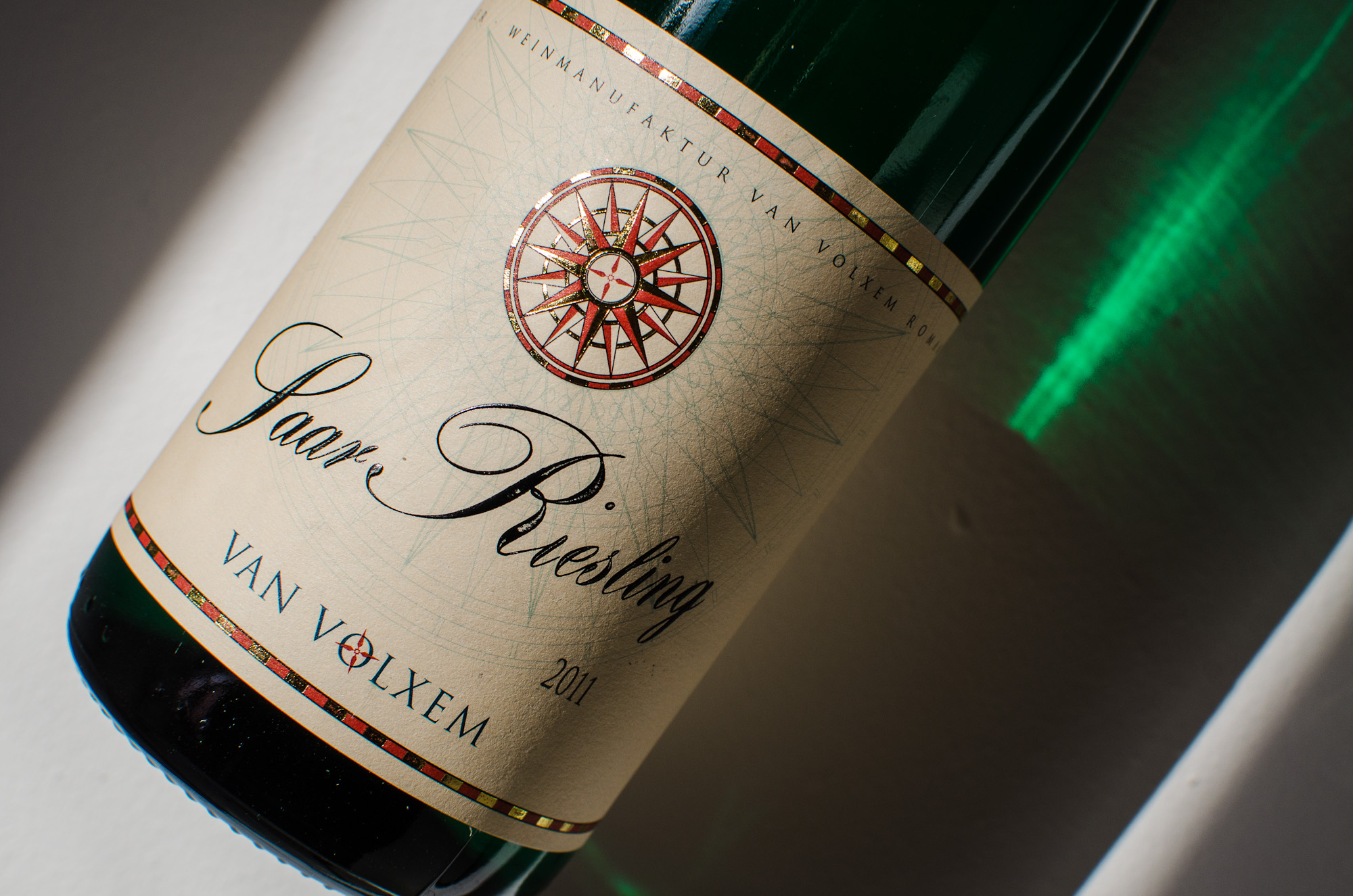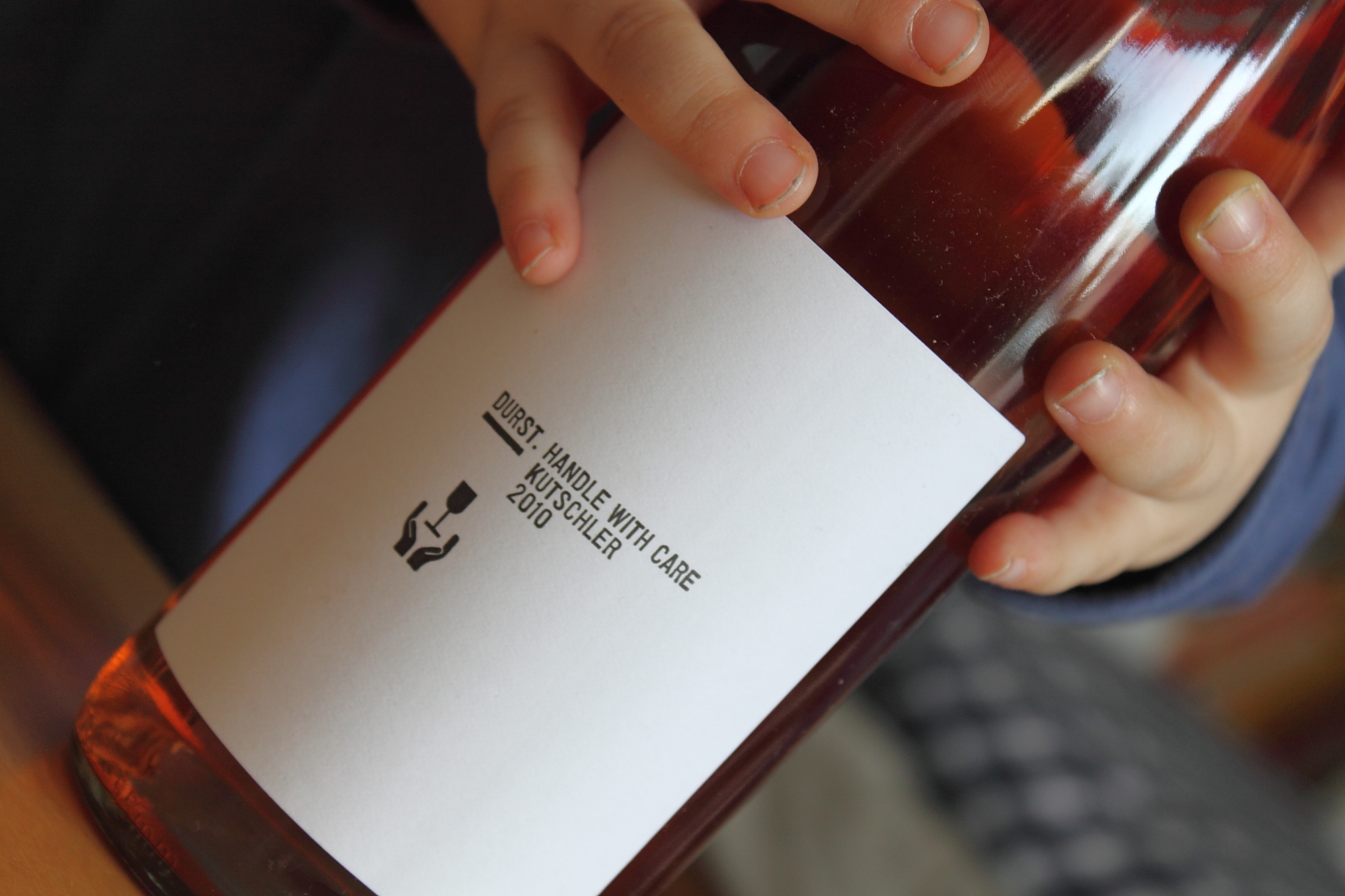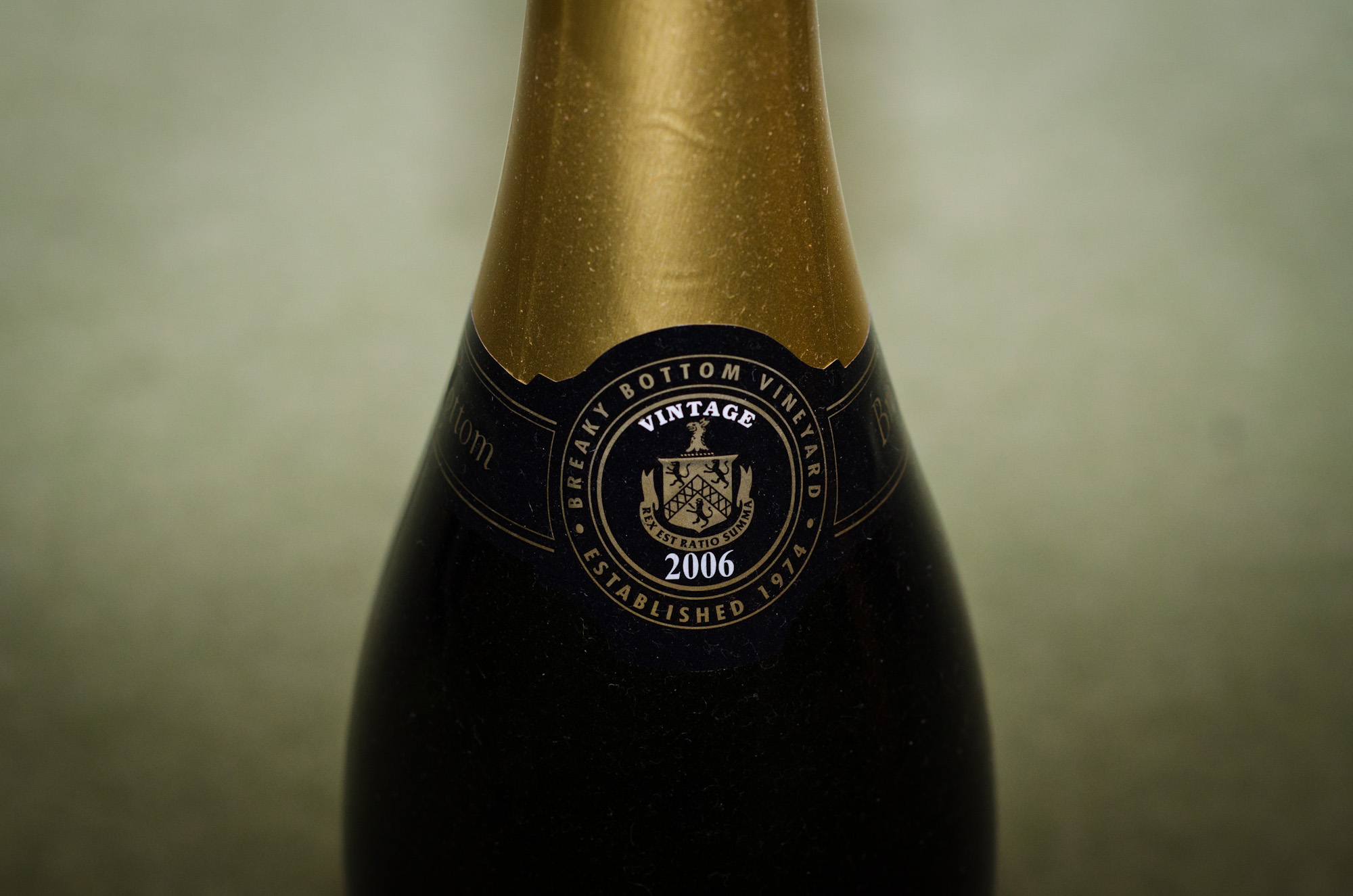Van Volxem, Saar Riesling, 2011
Every hype brings with it the danger of disappointment. I mostly suffer from this with regards to movies (which is why I am staying away from reviews of "The Dark Knight Rises" until I have had a chance to see it), but the same can happen with wine. When it comes to the Saar Riesling from the Van Volxem estate hype was never needed to convince me to buy a few bottles every year as it has been consistently good, and also good value.

Even so I could not help notice the bold headlines that my wine merchant threw at me with this wine - headlines of high praise from respected wine critics for a Riesling that does not even follow the "single vineyard" paradigm. Because of the quality of the previous vintages I was confident it would be good, but would the hype spoil my enjoyment when I would not be quite blown away?









